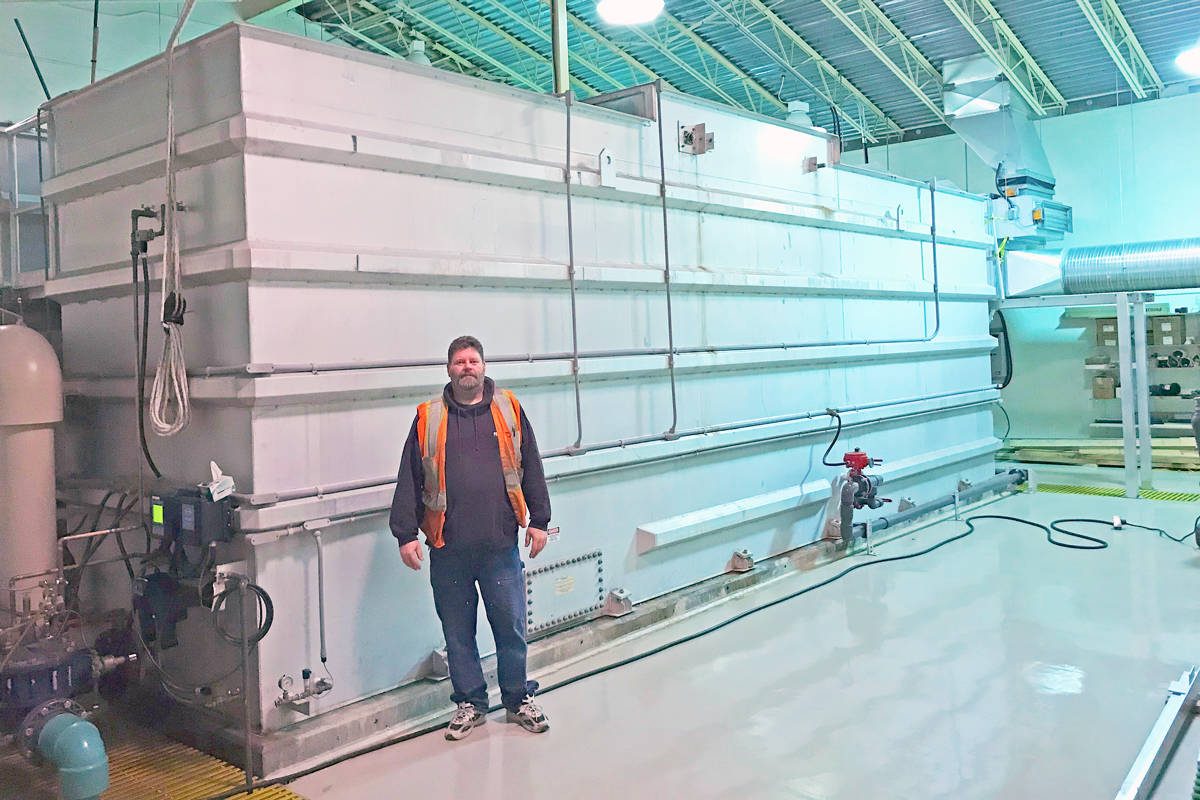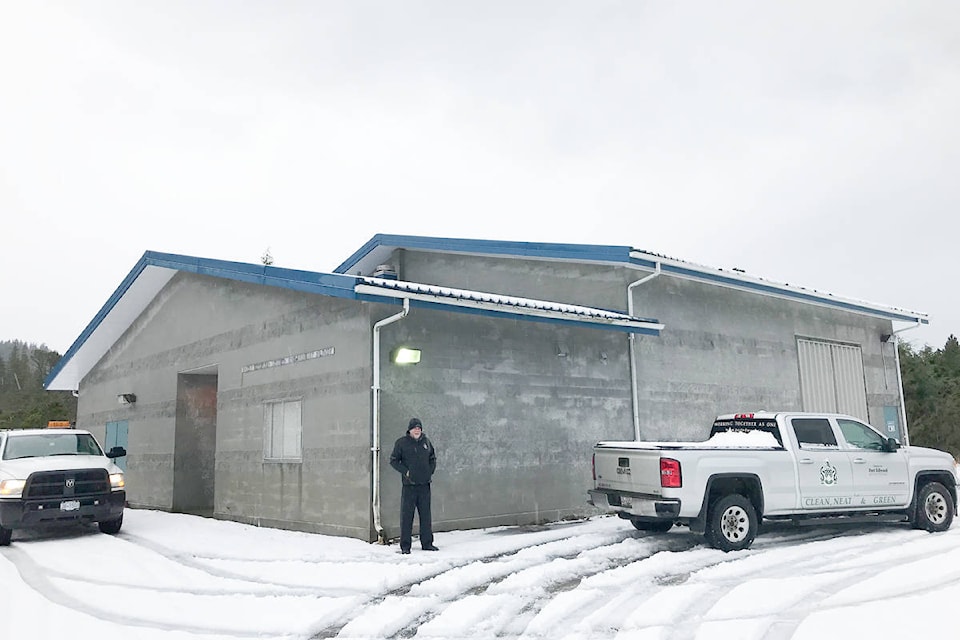How is it that a northern B.C. city of more than 12,000 people is without clean drinking water, while a neighbouring town of fewer than 500 people has a state-of-the-art water filtration system?
It has been a month since the City of Prince Rupert issued a boil water notice on Dec. 14 after test results discovered giardia and cryptosporidium in city water. These two microparasites cause gastrointestinal complications. To avoid exposure, residents have been informed to boil their water for a minimum of one-minute.
READ MORE: Microscopic parasite found in Prince Rupert water affecting thousands
A state-of-the-art system in Port Edward
Some residents have been filling their bottles of water at neighbouring town, Port Edward, where Mayor Knut Bjorndal has publicly invited Prince Rupert residents to take advantage of their “state-of-the-art system.”
“It was built and finished in 2004 and it was state-of-the art at that time. Been there for 14-15 years, and it’s time for us to review it. We had a consultant come review it and we’ll try to update it as best as we can in the new year,” Bjorndal said.
The total cost of Port Edward’s water treatment facility was $3.2 million. In 2000, the district applied to the Canada-British Columbia Infrastructure Program to finance two-thirds of the project.
Port Edward’s water supply comes from Alwyn Lake, and before the facility was installed in 2004, the district relied on chlorine to disinfect the water.
“Water quality is an issue of concern,” wrote the district on its financial implications for water treatment in 2001. “The water is highly coloured and has high levels of organic matter that when combined with chlorine form disinfection by-products (DBP’s). DBP’s pose a long-term high risk to humans.
At the time, the DBP’s were well above maximum acceptable levels in Port Edward.
Based on need, the district received the grant to build its water treatment facility to provide clean water. The district also has a sewage treatment plant, built in 1997, and last year the sewer and stormwater pipes were upgraded, costing $975,000.
Residents pay approximately $700 a year for water, sewer and garbage services.
A water system report was discussed at the district’s council meeting on Jan. 8. Northern Health collects water samples twice a month to test for coliforms, or harmful bacteria. Twice a year, the water is sampled for by-products of the chlorination process.
Clean water from the district was available to Prince Rupert residents at the RV Sanidump station until Jan. 3, when cold weather froze the pipes and Port Edward had to shut the water off. But as of Jan. 9, they’ve turned the water back on to share.
Metlakatla First Nation water treatment
Across the harbour, the Metlakatla First Nation community has an award-winning water treatment plant that has been operating since 1994.
Despite the remote location of the village with a population of less than 100 people, three major health concerns helped fuel the project: microparasites, such as giardia, were a threat, by-products from the disinfection process were an issue, and lead contamination was detected from old plumbing.
Engineering company Kerr Wood Leidal (KWL) found a reliable and economical way to treat the water using limestone — a process, the engineers said on their website “simulates nature”. The total project cost $1.3 million.
Since the plant was installed, the water is no longer tea-coloured, and it effectively treats water for bacteria, viruses and microparasites.
Be You Makeup by Shannon LoughWhere is Prince Rupert’s filtration system?
While there was an imminent need in both Metlakatla and Port Edward to build a water filtration system in the 90s and early 2000s, the urgency wasn’t as high in Prince Rupert — until now.
In 1999, the B.C. Auditor General’s Report declared Prince Rupert’s water source to be “high-quality water at low cost.”
Discolouration of water was a result of tannins in the muskeg near the two lakes. While the tannins raise the acidity, the city’s use of chlorination was considered more effective against giardia and other bacteria, the report added: “As long as activities continue to be restricted in the watershed, Prince Rupert officials believe there will be little risk to their water source.”
In the report, Prince Rupert was held in high regard, an example of controlled water quality compared to other cities in B.C.
To date, the city is without both a water treatment facility and sewage treatment plant, which it can’t address until it updates its 100-year-old dam and pipelines. However, the city noted there is a chlorination station at Shawatlan next to the lake and pumping station.
Current challenges with water quality
Since construction began on the multi-million dollar upgrades to city water infrastructure, the city had to increase the use of chlorine to make sure it’s safe to drink.
But routine inspection by Northern Health last summer, found higher than the maximum allowable concentrations of trihalomethanes and haloacetic acids, both byproducts of chlorine, in city water.
The report also found the water to be corrosive due to low pH and low alkalinity — which would lead to elevated levels of lead from taps where outdated plumbing fixtures contain lead. Northern Health recommends the city take action by March, 2019.
“The city is working with Northern Health to implement a required monitoring program for corrosion by the required timelines. We also sent out a postcard noting impacts of corrosivity to residents this past spring, highlighting the important of flushing. Our primary focus is on obtaining funding to implement water treatment that will eliminate noted quality concerns in the Health Officer’s report,” said Veronika Stewart, city communications manager.
Mayor Lee Brain posted in an online statement that many of the community’s questions will be answered on Jan. 14, when city staff presents a technical report on the water situation.
“We will get through this together, and will work hard to expedite the water supply upgrades. Our mission is to build the best water system that will last for the next 100+ years — and one we will all be proud of,” Brain said.
To report a typo, email: editor@thenorthernview.com.
<>Shannon Lough | Editor
Shannon Lough
Send Shannon email
Like the The Northern View on Facebook
Follow us on Twitter

